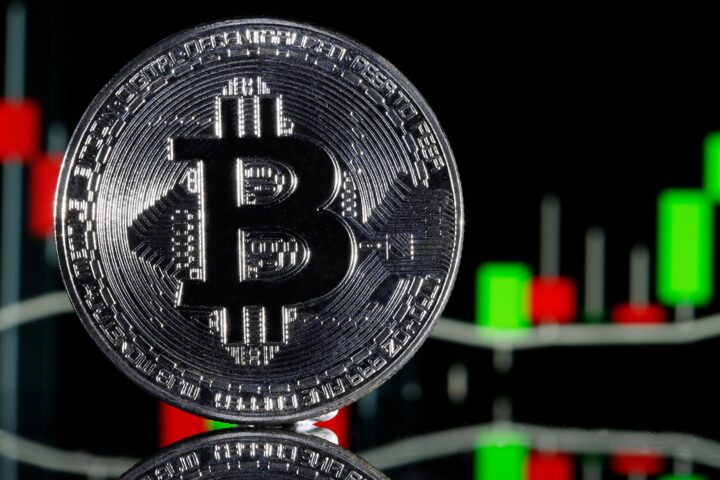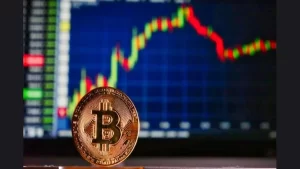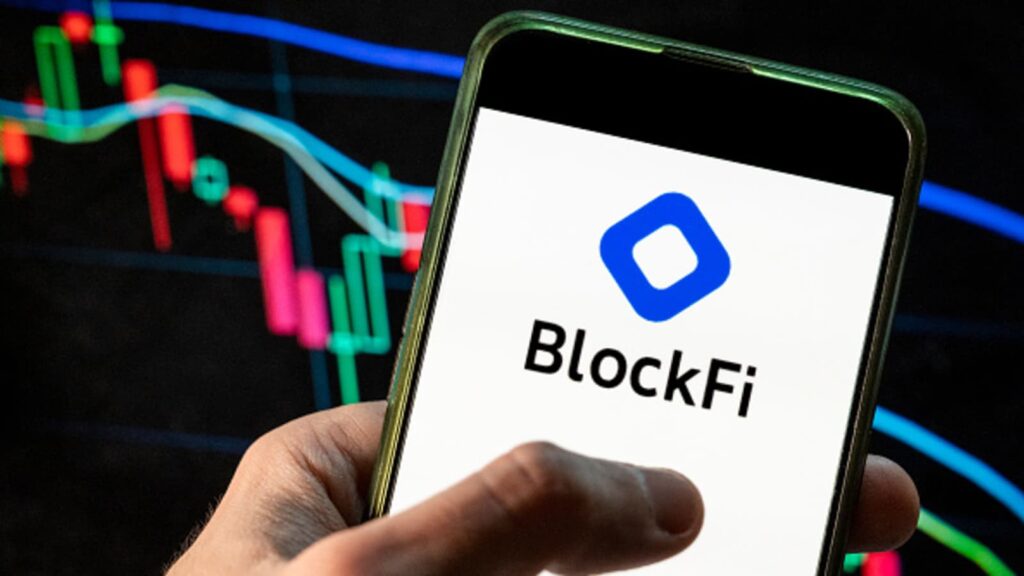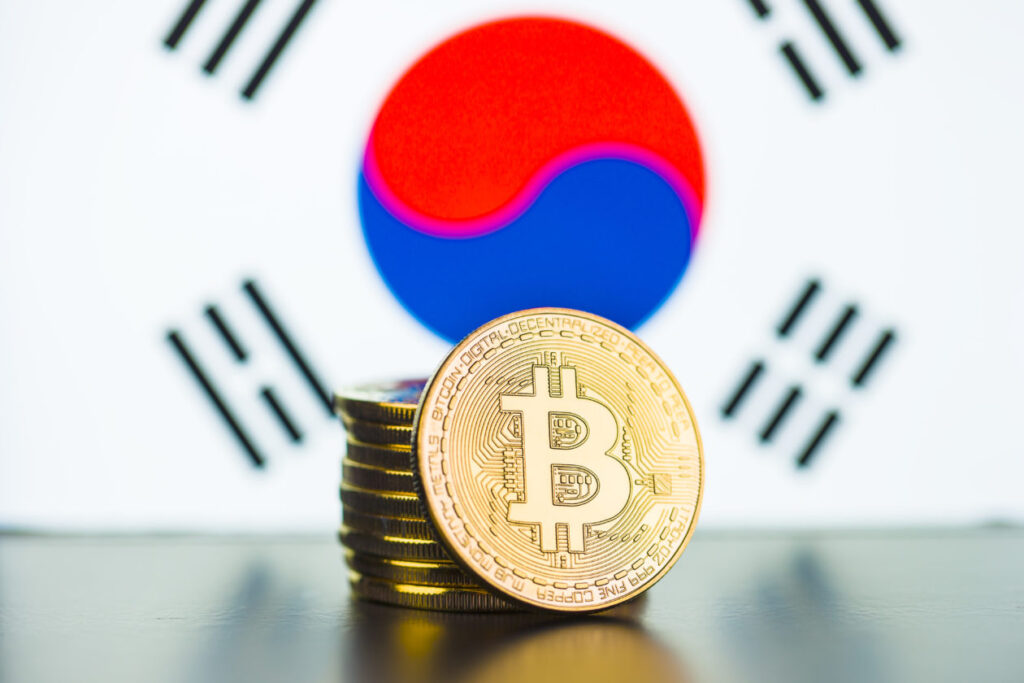An Australian federal court has seemingly drawn a nuanced line regarding crypto-yield products, ruling that while products promising a managed yield will require a financial services license, “pass-through” decentralized-finance (DeFi) products may not.
In an order dated February 9, federal court judge Ian Jackson ruled that Block Earner would face penalties over its “Earner” product offering in 2022, which provided yield for loans denominated in USD Coin, Bitcoin (BTC), Ether, and PAX Gold (PAXG), stating that it needed to obtain an Australian Financial Services License (AFSL).
However, Jackson refrained from categorising Block Earner’s DeFi “Access” product similarly, explaining that it did not operate under a managed investment scheme and, therefore, no AFSL was required.
“The Court’s decision carries nuanced implications for Block Earner and the broader crypto industry in Australia,” Block Earner stated on February 9.
“The decision provides guidance to the industry as to the applicability of Australian financial services laws to crypto-related products and services.”
The case was initiated by the Australian Securities and Investment Commission (ASIC), which alleged that both Block Earner’s Access and Earner products violated corporation laws.
In an interview with Cointelegraph, Piper Alderman digital asset lawyer Michael Bacina clarified that Access was simply a pass-through to decentralized finance (DeFi).
“The Earner product involved a representation that users’ crypto would be used to generate a return (but users would only receive a fixed interest amount),” said Bacina.
Meanwhile, the Access product does not depend on Block Earner generating a return at all and is “completely dependent on Aave or Compound,” he added.
The crucial aspect to examine lies in how these products are marketed, Bacina emphasised.
“The takeaway for Australian crypto businesses is how important it is that marketing and representations clearly align and that the features of products are very carefully considered.”
READ MORE: Crypto News Today: Spot Bitcoin ETFs Surpass $1 Billion in Daily Trading Volume
The Earner product operated from March 17, 2022, to November 16 of the same year.
Block Earner confirmed to Cointelegraph that it terminated the Earner product before proceedings commenced and that the findings do not affect any of Block Earner’s current products.
In a statement, Block Earner said the dismissal of ASIC’s case against Access “is an important development in showing how DeFi can coexist with Australia’s regulatory frameworks, paving the way for further development and adoption of DeFi solutions.”
Aaron Lane, a senior research fellow at the Royal Melbourne Institute of Technology’s Blockchain Innovation Hub, believes the Australian Treasury’s proposed legislation for the crypto sector is likely to impose licensing conditions on Block Earner, should it be passed.
ASIC will now seek orders from the court imposing monetary penalties. The proceedings have been listed for a case management hearing at 9.30 am on March 1, 2024.
ASIC said the decision was a step forward in protecting consumers from digital asset products.
“ASIC remains concerned that consumers do not fully appreciate the risks associated with products involving crypto-assets and today’s decision is an important step forward to ensuring there are appropriate protections for consumers.”
The securities regulator called on firms offering cryptocurrency products to “carefully consider” whether their offerings constitute financial products under the existing regime.
If products do fall under the definition of a managed investment scheme, firms should seek licensing before offering them, ASIC stressed.
The National Fraud Intelligence Bureau (NFIB), a police unit in the United Kingdom focused on scrutinising and collecting intelligence on fraud and finance-related cybercrime, has thwarted 43 web domains associated with fraudulent activities.
As per an update from Pete O’Doherty, the acting commissioner of the City of London Police, the NFIB stumbled upon a spoof email address masquerading as the crypto site blockchain.com.
Authorities unearthed an additional 42 web domains, such as “actionfraud.info” and “department-fraud.com,” promptly blocking these addresses upon discovery.
The NFIB implored individuals falling prey to cybercrimes to report through official channels and the hotline.
By December 2023, nearly 300,000 malevolent websites had been removed due to such reports. Some phishing attempts involved deceiving email recipients into believing they had won a Tupperware set.
Phishing remains a persistent problem within the crypto community.
On Jan. 20, hardware wallet producer Trezor flagged a security breach compromising the data of 66,000 users.
Following the incident, at least 41 users reported receiving phishing emails soliciting sensitive information to access their crypto wallets.
Concurrently, a widespread phishing campaign inundated the email inboxes of numerous crypto investors.
READ MORE: Crypto News Today: Spot Bitcoin ETFs Surpass $1 Billion in Daily Trading Volume
On Jan. 23, the crypto community identified a phishing assault by fraudsters masquerading as representatives from major Web3 companies.
These hackers initiated an email campaign promoting bogus token airdrops, purportedly from entities like Cointelegraph, WalletConnect, and Token Terminal.
Subsequently, it was confirmed that the phishing attack stemmed from a breach at the email marketing firm MailerLite.
On Jan. 24, the company disclosed that hackers exploited a social engineering attack to seize control over Web3 accounts.
A MailerLite team member, responding to a customer inquiry, inadvertently clicked on a link redirecting to a fraudulent Google sign-in page.
Unaware, the employee signed in, granting the attackers access to MailerLite’s admin panel. According to blockchain analytics firm Nansen, the main wallet of the attackers amassed at least $3.3 million in total inflows since the attack.
Private equity firms Deus X Capital and Bridgetower Capital are preparing to unveil a fresh $250 million crypto infrastructure platform, introducing crypto staking, investment, and other digital asset services tailored for institutional investors in the Middle East.
Dubbed Bridgetower Middle East, the new venture will be headquartered in the Abu Dhabi Global Market, a designated free economic zone within the capital of the United Arab Emirates (UAE).
It will be overseen by the CEOs of Deus X and Bridgetower, Tim Grant and Cory Pugh, respectively, as outlined in a joint statement released on February 8.
Grant elaborated on the initiative’s objectives in an interview with Cointelegraph, highlighting its mission to establish a robust infrastructure capable of meeting the region’s demand for turnkey staking and artificial intelligence (AI) graphical processing units (GPUs) computing. He stated:
“[Bridgetower ME] will serve as a launchpad to support a wide range of institutional clients who are looking to leverage new technologies in a scalable, compliant, and cost-effective manner.”
The new entity will deploy nodes locally for institutional staking and offer advanced data center capabilities, including AI GPUs, Web3 commerce, and private equity incubation services.
Pugh emphasised in the statement the intention to inject additional “substantial assets” into the newly formed entity, augmenting the self-funded $250 million worth of assets under management.
“We believe [regional regulators] have created a strong roadmap for companies willing to operate their businesses in the highest ethical and legal manner, which in turn has instilled confidence in others looking to operate in the region,” noted Pugh in conversation with Cointelegraph.
READ MORE: Ethereum Foundation Explores Strategies to Optimize Blockchain for Rollup-Centric Roadmap
Both parties affirmed their commitment to investing in the UAE’s digital asset ecosystem and exploring potential public listing options on the Abu Dhabi Stock Exchange (ADX).
Deus X, a specialist investment and operating firm established in October 2023 with initial assets of $1 billion, recently spearheaded a $5.5 million funding round for Web3 gaming firm Saltwater Games.
Meanwhile, Bridgetower, a digital asset infrastructure provider and private investment equity firm, collaborated with the Solana Foundation in 2021 to establish a $20 million fund aimed at developing the blockchain network across the European Union, the United Kingdom, and Switzerland.
The UAE, encompassing Abu Dhabi and Dubai, has positioned itself as a global digital asset hub, attracting investments and international players to establish a local presence.
Noteworthy developments include Paxos, a United States-based crypto firm, securing in-principle approval in Abu Dhabi on November 29, 2023, to issue stablecoins and offer digital asset services.
Concurrently, on the same day, Iota, an open-source blockchain developer, announced the launch of a $100 million-backed distributed ledger technology foundation in the UAE capital.
Moreover, on October 30, 2023, Saudi Arabia’s NEOM mega-city project joined forces with Web3 games developer and investment firm Animoca Brands to develop Web3 enterprise service capabilities.
The National Basketball Association (NBA) finds itself embroiled in a potential class-action lawsuit concerning its marketing agreements with now-defunct cryptocurrency lender Voyager Digital. Users of the platform allege losses exceeding £4.2 billion.
According to a lawsuit filed on February 6th in a Miami district court, the NBA’s approval of Voyager’s promotional deal with the Dallas Mavericks was deemed “grossly negligent.”
The extensive 100-page filing asserts that the NBA was meant to act as a “gatekeeper” in such matters.
“The sole aim of this lawsuit is to hold the NBA accountable,” asserts the class group. They argue that the NBA’s widespread promotion of Voyager’s unregistered securities makes it liable for any ensuing damages.
Furthermore, plaintiffs claim that the NBA willingly embraced the risks associated with collaborating with cryptocurrency exchanges like Voyager, Coinbase, and FTX.
This decision allegedly stemmed from financial pressures caused by COVID-19, including reduced arena attendance and television revenue losses.
The lawsuit also implicates Voyager’s law firm, McCarter & English, alleging that it provided a misleading “Legal Opinion” to assuage concerns about the legality of Voyager’s tokens.
READ MORE: Grayscale CEO Urges Regulators to Approve Exchange-Listed Options for Bitcoin ETFs
This legal action follows a prior lawsuit against former Dallas Mavericks owner Mark Cuban, accused of promoting Voyager and misrepresenting its safety.
The expanded litigation now targets the NBA and McCarter & English due to revelations uncovered during the discovery process of the earlier lawsuit.
Voyager ceased withdrawals in July 2022 and declared bankruptcy the same month due to its involvement with the now-defunct crypto hedge fund Three Arrows Capital (3AC).
Numerous lawsuits have emerged against celebrities, athletes, and sporting entities involved with cryptocurrency firms since the collapse of FTX in late 2022.
Entities such as the Mercedes F1 Team, Major League Baseball, and prominent figures like Tom Brady and Steph Curry face legal action for their partnerships with FTX.
At the time of reporting, neither the NBA nor McCarter & English had responded to requests for comment.
A United States judge has approved a settlement resolving disputes between crypto lender BlockFi and defunct crypto hedge fund Three Arrows Capital (3AC), with the details ordered to remain sealed.
New Jersey Bankruptcy Court Judge Michael Kaplan greenlit the agreement during a Feb. 6 hearing, aiming to halt further legal battles.
BlockFi asserted that 3AC owed it $129 million, whereas the hedge fund contended BlockFi owed it $280 million.
Judge Kaplan opted to keep the settlement agreement sealed, countering objections from the U.S. Trustee who argued for disclosure, citing the debtors’ failure to justify sealing.
BlockFi’s motion to seal specific information emphasized the sensitivity of the terms and their potential impact on litigation involving bankrupt crypto exchange FTX.
The court upheld the motion, emphasizing the need to safeguard settlement strategies and honor comity with 3AC’s foreign bankruptcy proceedings.
READ MORE: South Korean Prosecutors Arrest Haru Invest Executives in $830 Million Crypto Theft Scandal
Approval of the settlement enables BlockFi to proceed with distributions from the lending estate to creditors, a critical step sought for rapid approval.
Kaplan had previously greenlit BlockFi’s amended Chapter 11 and customer repayment plan in September 2023, following the firm’s clearance for liquidation.
Estimates indicated BlockFi’s debts amounted to $10 billion among over 100,000 creditors, with its three largest creditors owed $1 billion and 3AC owed $220 million.
Three Arrows Capital’s collapse in June 2022 led to BlockFi’s bankruptcy filing in late November 2022, following the downfall of FTX.
Additionally, in February, OPNX, a crypto bankruptcy claims platform launched by 3AC co-founders Su Zhu and Kyle Davies, announced its official closure, ceasing operations by Feb. 14.
On February 7, the total daily trading volume for spot Bitcoin exchange-traded funds (ETFs) surpassed a billion dollars, with BlackRock taking the lead.
Bloomberg Intelligence analyst James Seyffart noted a significant surge in trading activity for BlackRock’s iShares Bitcoin Trust (IBIT), which amassed a daily trading volume of $341.2 million, outstripping the Grayscale Bitcoin Trust’s $296.5 million, according to Seyffart’s analysis.
Fidelity’s FBTC fund secured the third position with a trading volume of $200 million, while the remaining seven funds collectively contributed $188 million, culminating in a daily trading volume exceeding a billion dollars.
Despite this milestone, Seyffart downplayed its significance, stating that surpassing the billion-dollar mark “isn’t that big of a deal” for Bitcoin ETFs.
He clarified that while it represented an increase from recent days, it still fell short of the initial trading weeks.
READ MORE: Crypto Wallets Tied to FTX and Alameda Transfer $38.8 Million to Exchanges Since January 2024
In a notable trend, inflows into spot Bitcoin ETFs have consistently outpaced outflows from GBTC for the ninth consecutive day.
On February 7, preliminary data from Farside revealed $81 million in outflows from GBTC, contrasted with $226 million in inflows across the other nine spot Bitcoin ETFs, resulting in net flows of $145 million.
BlackRock witnessed an inflow of $56 million, Fidelity’s fund saw an increase of $130 million, and Bitwise experienced inflows of $21 million.
On February 8, investor and author Fred Krueger highlighted a significant observation: the combined BTC holdings of the newly launched nine ETFs were poised to exceed those of MicroStrategy, the largest corporate holder of the asset.
The ETF funds collectively held approximately 187,000 BTC as of February 7, slightly below MicroStrategy’s holdings of 190,000 coins valued at over $8 billion.
In a related development, it was reported that Fidelity had begun allocating spot Bitcoin to their All-in-One Conservative ETF. ETF analyst Eric Balchunas regarded this move as a positive sign, particularly in the conservative investment domain.
The South Korean government has introduced an updated version of the Virtual Asset Users Protection Act, aiming to safeguard cryptocurrency investors from market misconduct.
The Financial Services Commission (FSC), South Korea’s principal financial regulatory body, unveiled the new legislation on February 7, intending to uphold investor rights and enhance market transparency.
This new crypto-focused law in South Korea explicitly prohibits the exploitation of undisclosed vital information, market manipulation, and illicit trading activities.
To enforce compliance, the legislation imposes severe penalties, including fixed-term imprisonment exceeding one year or fines ranging from three to five times the illegal profits.
Scheduled for implementation on July 19, 2024, the Virtual Asset User Protection Act was officially passed on July 18, 2023.
Under this act, individuals involved in illegal crypto trading schemes and generating over 5 billion won (approximately $3.8 million) could face life imprisonment.
READ MORE: ‘Very Few Speak of the Crypto Winter, Bitcoin is Rising in 2024’ – Serhii Tron on Crypto Investments
Furthermore, the FSC underscores its authority to supervise virtual asset business operators, investigate unfair trading practices, and ensure adherence to the Virtual Asset User Protection Act.
This includes conducting inspections and taking regulatory actions as necessary.
The genesis of this legislative update can be traced back to a significant industry crisis involving Terraform Labs and its South Korean founder, Do Kwon.
The collapse of Terraform Labs in May 2022 resulted in a market downturn, wiping out over $450 billion.
Consequently, Kwon faces extradition to the United States, where he is implicated in various charges, including commodities and securities fraud, wire fraud, and market manipulation.
In a related development in Asia, Thailand’s Ministry of Finance has announced a VAT exemption on digital asset trading.
This move aims to position Thailand as a digital asset hub, with the suspension of the 7% VAT requirement on crypto income effective since January 1, 2024, and with no specified expiration date.
The originator of the robocall that circulated in New Hampshire, bearing what appeared to be the voice of United States President Joe Biden urging citizens not to vote in the Jan. 23 primary, has been identified as Life Corporation and an individual named Walter Monk, as revealed by the New Hampshire Department of Justice.
Attorney General John Formella disclosed that the source of the calls was traced to a Texas-based firm, Life Corporation, and Walter Monk.
Utilizing an artificial intelligence (AI) deepfake tool, these automated messages aimed to interfere with the 2024 presidential election.
The state attorney general’s office swiftly labeled these robocalls as misinformation and advised voters in New Hampshire to disregard the message.
AI deepfake tools utilize advanced algorithms to fabricate convincing digital content, such as videos, audio recordings, or images, with the intention to deceive.
The Election Law Unit, in collaboration with state and federal partners like the Anti-Robocall Multistate Litigation Task Force and the Federal Communications Commission Enforcement Bureau, launched an investigation upon identifying voter suppression calls in mid-January.
READ MORE: South Korean Financial Regulator FSS Seeks Insights on Spot Bitcoin ETFs from US SEC
Following the investigation, the Election Law Unit issued a cease-and-desist order to Life Corporation for violating New Hampshire’s statutes on bribery, intimidation, and suppression.
Immediate compliance was demanded, with the unit reserving the option for further enforcement actions based on prior conduct.
Investigators from the Election Law Unit traced the calls to a Texas-based telecoms provider, Lingo Telecom.
Simultaneously, the Federal Communications Commission issued a cease-and-desist letter to Lingo Telecom for its alleged involvement in supporting illegal robocall traffic.
In response to these events, FCC Chairwoman Jessica Rosenworcel proposed considering calls featuring AI-generated voices as illegal, subject to regulations and penalties outlined in the Telephone Consumer Protection Act.
The proliferation of deepfakes has heightened concerns regarding AI-generated content, with institutions like the World Economic Forum and Canada’s primary national intelligence agency, the Canadian Security Intelligence Service, highlighting the risks associated with such technology and its potential for disinformation campaigns across the internet.
A novel online service named OnlyFake, boasting the use of artificial intelligence (AI) “neural networks” and “generators,” has reportedly managed to successfully pass Know Your Customer (KYC) checks on multiple cryptocurrency exchanges.
The astonishing part? It costs a mere $15 per document.
Operating under the alias “John Wick,” the owner of OnlyFake claims that the service can help users bypass KYC checks on major exchanges like Binance, Kraken, Bybit, Huobi, Coinbase, and OKX, along with the crypto-friendly neobank Revolut.
This revelation has raised significant concerns about potential exploitation by crypto scammers and hackers, who could utilize these counterfeit documents to open exchange accounts and bank accounts while concealing their true identities, thereby making them harder to trace.
OnlyFake offers fake driver’s licenses and passports from 26 countries, including the United States, Canada, Britain, Australia, and several European Union nations.
Payments are accepted in various cryptocurrencies through Coinbase’s commercial payments service.
Recent reports indicate that OnlyFake’s users have successfully used these counterfeit IDs to evade verification at crypto exchanges like Kraken, Bybit, Bitget, Huobi, and even financial service providers such as PayPal.
READ MORE: Artists Ryder Ripps and Jeremy Cahen Ordered to Pay $9 Million in BAYC NFT Lawsuit
An alarming Telegram channel also showcases individuals sharing their apparent success stories with these IDs.
The OnlyFake website, however, asserts that it does not “manufacture forged documents as it is illegal.” Instead, it claims that its “templates are only for use in movies, TV shows, and web illustrations.” Nevertheless, generating a fake document on the platform reportedly takes less than a minute.
Users can upload their own photos or select one randomly from a “personal library of drops,” which are not generated using a neural network.
Furthermore, OnlyFake provides an image metadata spoofing feature, allowing users to manipulate GPS location, date, time, and device information, which some identity verification services rely on to authenticate documents.
This raises additional concerns about the potential for widespread abuse of this service.
Crypto industry executives have been voicing concerns about the growing sophistication of deep fake technology and its implications for identity verification.
In 2023, Binance’s Chief Security Officer, Jimmy Su, warned of an increasing number of scammers attempting to deceive exchange KYC checks using deep fakes, predicting that these videos would soon be convincing enough to fool human operators.
While some exchanges like OKX have responded promptly to these allegations by denying any condoning of fraudulent conduct and initiating investigations, the emergence of services like OnlyFake underscores the ongoing challenges faced by the cryptocurrency industry in combating fraud and ensuring robust security measures.
Coinbase, Binance, Kraken, Bybit, Bitget, Revolut, Huobi, and PayPal have yet to provide official comments regarding these developments.
Bitsonic, a prominent cryptocurrency exchange, has been embroiled in a scandal resulting in severe legal consequences for its CEO and technology chief.
According to reports from South Korean media outlet Yonhap News Agency on Feb. 6, Jinwook Shin, the CEO, has been sentenced to seven years in prison, while the firm’s technology chief, identified only as Mr. A, received a one-year jail term.
Their charges stem from the misappropriation of 10 billion South Korean won ($7.5 million) worth of customer deposits.
The Seoul District Court found Shin guilty of various offenses including fraud, forging records, falsifying records, and obstructing business through computer-related means.
Similarly, Mr. A was convicted of obstructing business through computer activities.
The court emphasized the significant damage inflicted upon trust in crypto exchanges by their actions, noting their evasion of responsibility and lack of remorse.
Moreover, it highlighted the failure to recover a substantial portion of customer funds.
The court revealed that Shin had manipulated transaction volumes on Bitsonic between January 2019 and May 2021.
He utilized company funds to purchase Bitsonic’s token, artificially inflating its value.
READ MORE: Binance Launches $5 Million Bounty to Root Out Corrupt Staff Amidst Token Listing Controversy
Additionally, he falsified deposits by injecting counterfeit currency into the exchange’s system, creating a facade of legitimate transactions.
Mr. A further exacerbated the situation by developing a program that artificially inflated cryptocurrency prices on the exchange.
Furthermore, Shin disseminated false information by announcing a partnership with an international exchange, which contributed to the scheme’s unraveling.
As a result, investors were unable to withdraw their funds, leading to losses totaling $7.5 million.
Bitsonic ceased operations in August 2021, citing internal and external issues. However, this is not an isolated incident in the cryptocurrency realm.
On the same day, the Seoul Prosecutors Office arrested the CEO and two executives of Haru Invest, a crypto yield platform.
Allegations suggest they misappropriated 1.1 trillion won ($830 million) from 16,000 users, primarily through reinvestments between March 2020 and June 2023, resulting in suspended withdrawals for users.












